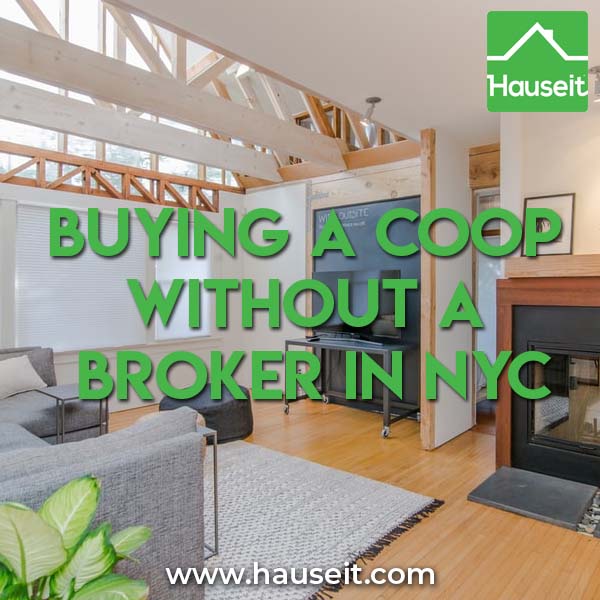A common question that comes up for home buyers in NYC is how much is outdoor space worth? Is it worth as much as indoor square footage, or do you not place any value at all on it? The most common response real estate agents will come back with is that you typically value outdoor space at 50% of the value of the interior square footage. However, the reality is much more nuanced than that.
Types of Outdoor Spaces in NYC
-
Balconies – Balconies are a ubiquitous feature in NYC’s architectural landscape, predominantly found in buildings erected in the latter half of the 20th century. These spaces, while limited in size due to their protrusion from the building, vary from compact Juliet balconies to more expansive areas. The utility and size of a balcony are pivotal in determining its value, with larger balconies offering more opportunities for use and enjoyment.
-
Terraces – Terraces represent a more spacious form of outdoor living, often situated atop another apartment in buildings that taper off as it gets taller. These spaces are not constrained by size limitations and offer unobstructed views and open skies, enhancing their desirability. The location and usability of a terrace, particularly if it is accessible from the main living areas, significantly influence its valuation.
-
Private Backyards – In NYC, you’ll most find private backyards with townhouses. In Brooklyn, they’re more often divided up into condo or co-op units, but in Manhattan the entire townhouse is usually sold as a single-family. Private backyards are a coveted feature for owners of townhouses. These expansive areas present various considerations, including light availability and privacy. The valuation of a backyard is often derived by comparing similar properties in the vicinity, taking into account the unique attributes of each space.
-
Private Roofs – Private roofs constitute another form of desirable outdoor space, with those connected to the apartment holding higher value than disconnected ones. The ease of access and the level of sunlight exposure are key determinants in assessing the value of private roof spaces.
How to value outdoor space in NYC
-
Balconies: Typically, balconies offer the least value among outdoor spaces. Their value increases with size, as larger dimensions allow for furniture placement and better utility. However, balconies inherently have size constraints due to their design, extending outward from the building. Some smaller balconies might even detract from an apartment’s appeal, especially if they obstruct natural light from the unit above. On average, balconies could be estimated to be worth around 20-25% of indoor space.
-
Disconnected Roof Space: Private roof spaces that aren’t directly accessible from the apartment follow balconies in terms of value. The inconvenience of navigating the building’s common areas to access these spaces diminishes their appeal. If the building features a communal area near the roof with restroom facilities, it slightly elevates the space’s value. Typically, such disconnected roof spaces hold a value of about 30-35% of indoor space.
-
Backyards: While backyards offer expansive areas, their sheer size can sometimes dilute their value relative to indoor space. For instance, a backyard that’s double the size of another might not necessarily command double the price. The value proposition becomes more complex when considering garden floor and basement apartments, which often come bundled with backyards. Instead of isolating the backyard’s value, it’s more pragmatic to compare the entire package with similar listings in the vicinity.
-
Connected Roof Space: Roof spaces directly connected to the apartment rank higher in value. These spaces, usually larger than their disconnected counterparts, are exclusive to top-floor apartments. However, the need to ascend a staircase, especially when carrying items, can be a drawback. Moreover, in densely built areas like Manhattan, surrounding taller buildings might overshadow these spaces. Nevertheless, the partial sun exposure and connectivity make these spaces worth approximately 40% of indoor space.
-
Terraces: Terraces are the crown jewels of NYC outdoor spaces. Their co-location with the apartment enhances their usability, especially if they adjoin the living room or kitchen. Most terraces are spacious enough for furniture and greenery. However, wraparound terraces, especially common in the Upper East Side, are an exception. Their narrow design limits their functionality, reducing their value. In general, terraces can be valued at 50% of the interior space, but exceptional terraces might command even higher values.
A Full Service Listing for 1%
Sell your home with a traditional full service listing for just one percent commission.
Market Dynamics and Valuation Principles
The advent of the COVID-19 pandemic has underscored the importance of outdoor spaces, leading to a surge in demand among buyers and renters. This increased demand has been particularly beneficial for Brooklyn, where outdoor spaces are both more common and affordable. The valuation of outdoor spaces is typically expressed as a percentage of the interior space, with this percentage witnessing an upward trend in the current market.
The principle of usability is central to the valuation of outdoor spaces. A Juliet balcony, with its constrained space, may hold limited value, whereas a well-appointed terrace with a range of amenities can command a premium. The prevalent metric suggests that outdoor space is valued at 50% of indoor space, but this can fluctuate based on the specific features and usability of the space.
Practical Considerations in Valuation
A myriad of practical considerations influence the valuation of outdoor space. These include the relative size of the outdoor space to the apartment, its ideal size for the prospective buyer, and the availability of comparable units without outdoor spaces. Additionally, the preferences and lifestyle of the buyer play a crucial role in determining the premium they are willing to pay for an outdoor area.
For instance, the practicality of a studio apartment with a vast roof space may not align with every buyer’s needs. Similarly, a buyer who does not prioritize outdoor living may not perceive additional value in such a feature. A comparative analysis of similar units and a thorough assessment of personal preferences are essential components in the valuation process.
Determining the worth of outdoor space in NYC real estate is a nuanced question, often met with the common response from brokers attributing a 50% credit to outdoor space compared to interior square footage. However, this is a generalized approximation, given the variability of outdoor spaces. A small balcony, for instance, may offer limited utility and could potentially obstruct sunlight from the unit above, impacting its value.
Conversely, a lawn or backyard can significantly enhance a property’s appeal, but as it increases in size, the price per square footage may not necessarily escalate proportionally. This implies that the mere presence of a backyard holds more value than its incremental enlargement. While there isn’t a one-size-fits-all answer to this valuation conundrum, the 50% credit approximation serves as a reasonable starting point for consideration.
The valuation of outdoor spaces in NYC real estate is a multifaceted task, necessitating a comprehensive understanding of the various types of spaces, market trends, and individual preferences. From balconies with panoramic views to private backyards in Brooklyn, each outdoor space possesses its unique value. By taking into account practical considerations, conducting comparative analyses, and evaluating personal needs, stakeholders in the real estate market can make informed decisions regarding the valuation of outdoor spaces in NYC.
Disclosure: Commissions are not set by law or any Realtor® association or MLS and are fully negotiable. No representation, guarantee or warranty of any kind is made regarding the completeness or accuracy of information provided. Square footage numbers are only estimates and should be independently verified. No legal, tax, financial or accounting advice provided.






